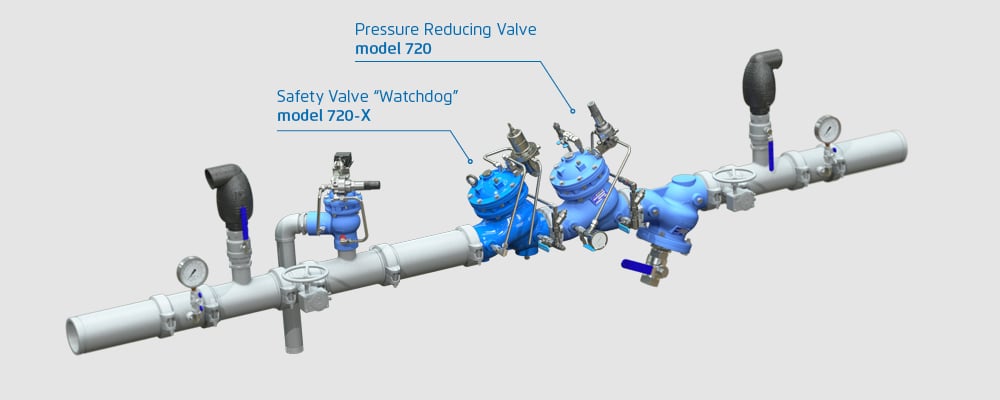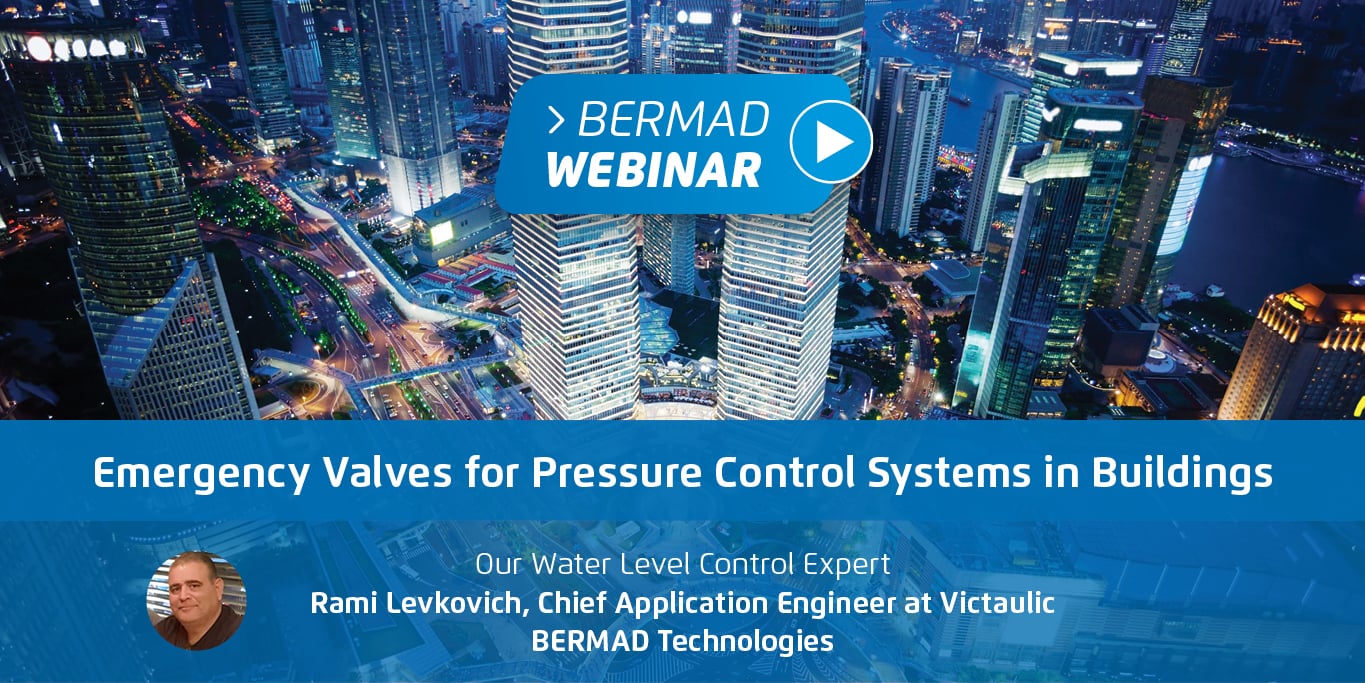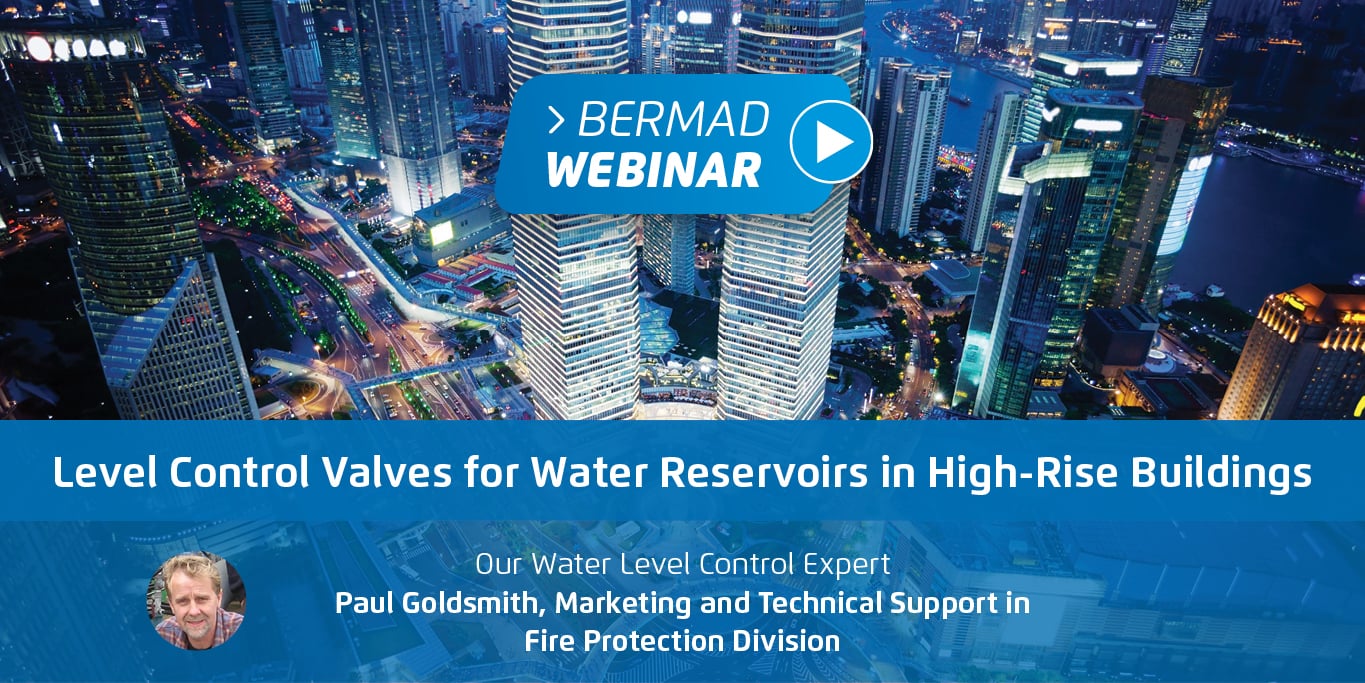When designing a drinking water supply in high rise buildings, both level control in reservoirs and pressure control systems are important to ensure reliable 24/7 water supply with sufficient leeway. Pressure spikes and water hammer are unwanted phenomena in high rise buildings that can affect the "pressure quality" in water supply systems and might even damage them.
<<Click here to read more about BERMAD's pressure reducing system>>
At BERMAD, we understand how much cost and effort goes into installing and maintaining such systems in high rises, which is why we recommend using pressure safety valves to protect against high unwanted pressure.
The danger of pressure spikes
Fixtures and pipes with low pressure grade might leak or even burst if high unwanted pressure reaches them. For this reason, appliances must be protected by pressure reducing systems to work properly for long periods of time.
There are constant changes to the water demand in a building water supply throughout the day. As consumers go about their daily lives, the demand may be low during the night, reach its peak in the morning rush and then calm down again for the rest of the day. Sometimes, a high flow rate in the system might be reduced to zero in a matter of seconds when a large fixture is turned off and this can create a water hammer. During all these flow variations, the pressure reducing systems in the building must react to provide safe and stable pressure.
In addition, if a pressure reducing valve gets blocked by debris or fails to maintain proper downstream pressure, a backup solution is required to protect the fixtures downstream.
The BERMAD solution: effective pressure safety valves
The key to a successful, cost-effective drinking water system in high-rise buildings is to install pressure safety valves in conjunction with pressure reducing valves. These systems are fairly straightforward: when there is a sudden rise in pressure, an emergency safety valve kicks in to regulate the pressure.
Let’s take BERMAD’s 700 series as an example.
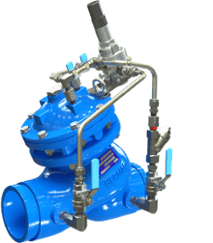
The most common BERMAD pressure reducing valve is model 720 pressure reducing valve. Under normal conditions, this valve will maintain constant downstream pressure regardless of fluctuations in upstream pressure or water demand.
Like all mechanical devices, it can face difficulties when regulating pressure, especially when a foreign object gets lodged in the mechanism and disrupts it from closing.
BERMAD offers a number of solutions for this challenge:

BERMAD’s 73Q quick pressure relief valve relieves excessive pressure when it rises above a certain value. This valve is able to open fully and close drip tight when normal pressure conditions resume. This valve combined with the 720 eliminates pressure peaks, protects your system from bursts, and even allows for thermal expansion over-pressure relief.
Another possibility is to use the 720-PD-X "Watchdog" as an emergency safety backup valve in conjunction with the 720 and 73Q models. This valve is installed upstream of the PRV station and remains fully open as long as the pressure is normal. If the pressure increases by 5m (7 psi) above the desired pressure, the valve will detect the variation, modulate to a safe level, and trigger an electric switch that alerts the building management system about the problem.

Alternatively, you could use BERMAD’s 72S-B2H pressure reducing system. This set-up is hydraulically operated and combines the emergency backup valve, the relief device, and the integral off-peak flow modulation, to create a truly comprehensive system.
In this configuration, you will find various BERMAD 700 valves in a compactly assembled and calibrated structure, designed to optimize safety and pressure reduction in your water system.
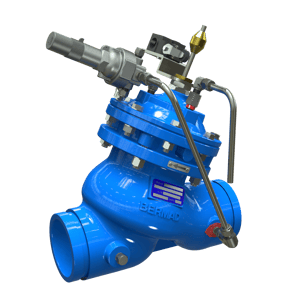
One more model used specifically with the 720 is the BC-794-P excessive pressure shut-off valve, which replaces the quick relief valve. This model is useful in buildings where the drainage system is not planned to handle the high expected flow from a quick relief valve, the 73Q. If the pressure increases by 10m above the main valve, this emergency 794 valve will hydraulically sense the pressure rise, will fully shut off the line, and trigger an alarm.
When using this device, it’s crucial to have two branches in parallel so that if one branch gets shut off by the 794, the other can still deliver water to the users. Combining our pressure safety valves with full redundancy helps to ensure that the pipes and fixtures are protected, and the users are also satisfied.
BERMAD safety valves save time and money
All BERMAD pressure safety valve systems are easy to install and maintain and are designed for system maintenance savings. All BERMAD models are made to be highly flexible as well, making them compatible with your system without impeding their functionality.
Read more about the BC-72S-B2H-P integrated pressure reducing system with the “watchdog” valve, low flow bypass and pressure relief valve.





